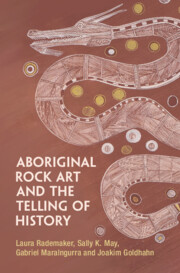299 results
Chapter 17 - Staging Debate in American Drama: Cheeses and Politics and Pigs
- from Part III - Genres
-
-
- Book:
- The Cambridge Companion to Nineteenth-Century American Literature and Politics
- Published online:
- 06 March 2025
- Print publication:
- 13 March 2025, pp 289-303
-
- Chapter
- Export citation
17 - Grounding Moral Psychology in Evolution, Neurobiology, and Culture
- from Part IV - Origins, Development, and Variation
-
-
- Book:
- The Cambridge Handbook of Moral Psychology
- Published online:
- 20 February 2025
- Print publication:
- 27 February 2025, pp 409-432
-
- Chapter
- Export citation
Chapter 13 - Early American Plant Writing
- from Part III - Global Regions
-
-
- Book:
- The Cambridge Handbook of Literature and Plants
- Published online:
- 06 February 2025
- Print publication:
- 13 February 2025, pp 251-267
-
- Chapter
- Export citation
Dietary intakes, food behaviours and health indicators among Métis youth in Manitoba, Canada
-
- Journal:
- Public Health Nutrition / Volume 28 / Issue 1 / 2025
- Published online by Cambridge University Press:
- 04 February 2025, e46
-
- Article
-
- You have access
- Open access
- HTML
- Export citation
Chapter 17 - Rethinking Critical Geographies
-
-
- Book:
- The New Nineteenth-Century American Literary Studies
- Published online:
- 02 January 2025
- Print publication:
- 23 January 2025, pp 249-264
-
- Chapter
- Export citation
Chapter 7 - Transitioning Queer Studies in Nineteenth-Century American Literature
-
-
- Book:
- The New Nineteenth-Century American Literary Studies
- Published online:
- 02 January 2025
- Print publication:
- 23 January 2025, pp 98-113
-
- Chapter
- Export citation
Challenging the Indian Child Welfare Act: colorblind racism, whiteness as property, and the legal architecture of settler colonialism
-
- Journal:
- Law & Society Review ,
- Published online by Cambridge University Press:
- 20 January 2025, pp. 1-26
-
- Article
-
- You have access
- Open access
- HTML
- Export citation
Chapter 7 - Gender Issues in Childhood- and Adolescence-Onset Epilepsies
-
-
- Book:
- Women with Epilepsy
- Published online:
- 19 December 2024
- Print publication:
- 02 January 2025, pp 122-133
-
- Chapter
- Export citation
Introduction
-
- Book:
- Fallen From Heaven
- Published online:
- 12 December 2024
- Print publication:
- 19 December 2024, pp 1-29
-
- Chapter
- Export citation
10 - Fiscal Citizenship, Assimilation, and Colonial Governance in Settler States
-
-
- Book:
- Anthropology and Tax
- Published online:
- 12 December 2024
- Print publication:
- 19 December 2024, pp 239-262
-
- Chapter
-
- You have access
- Open access
- HTML
- Export citation
The Realization of Portable MRI for Indigenous Communities in the USA and Canada
-
- Journal:
- Journal of Law, Medicine & Ethics / Volume 52 / Issue 4 / Winter 2024
- Published online by Cambridge University Press:
- 31 January 2025, pp. 816-823
- Print publication:
- Winter 2024
-
- Article
-
- You have access
- Open access
- HTML
- Export citation
“Three New Paradigms of Indigenous American (Re-)Discovery”
-
- Journal:
- Itinerario , First View
- Published online by Cambridge University Press:
- 21 November 2024, pp. 1-8
-
- Article
-
- You have access
- Open access
- HTML
- Export citation
Introduction
-
- Book:
- From Colonial Cuba to Madrid
- Published online:
- 14 November 2024
- Print publication:
- 21 November 2024, pp 1-29
-
- Chapter
-
- You have access
- HTML
- Export citation
4 - Native Bonds, Native Rights
-
- Book:
- From Colonial Cuba to Madrid
- Published online:
- 14 November 2024
- Print publication:
- 21 November 2024, pp 147-177
-
- Chapter
- Export citation
2 - How Yolŋu Songs Recount Deep Histories of International Trade across the Arafura Sea
- from Part I - Continuities
-
-
- Book:
- The Cambridge Companion to Music in Australia
- Published online:
- 14 November 2024
- Print publication:
- 14 November 2024, pp 23-39
-
- Chapter
- Export citation

Aboriginal Rock Art and the Telling of History
-
- Published online:
- 12 November 2024
- Print publication:
- 05 December 2024
Worldviews of Employment in Coast Salish Communities
-
- Journal:
- Canadian Journal of Law & Society / La Revue Canadienne Droit et Société / Volume 39 / Issue 2 / August 2024
- Published online by Cambridge University Press:
- 11 November 2024, pp. 312-334
-
- Article
-
- You have access
- Open access
- HTML
- Export citation
Chapter 15 - Recognition, Urban NDN Style
- from Part IV - Rethinking American Literature
-
-
- Book:
- The Cambridge Companion to Race and American Literature
- Published online:
- 02 November 2024
- Print publication:
- 27 June 2024, pp 221-236
-
- Chapter
- Export citation
5 - Other Language Ontologies
-
- Book:
- Language Assemblages
- Published online:
- 20 June 2024
- Print publication:
- 27 June 2024, pp 109-135
-
- Chapter
- Export citation
Chapter 28 - Creating Good Data Our Way
- from Section 6 - Future Directions
-
-
- Book:
- The Handbook of DOHaD and Society
- Published online:
- 20 June 2024
- Print publication:
- 27 June 2024, pp 312-323
-
- Chapter
-
- You have access
- Open access
- HTML
- Export citation


